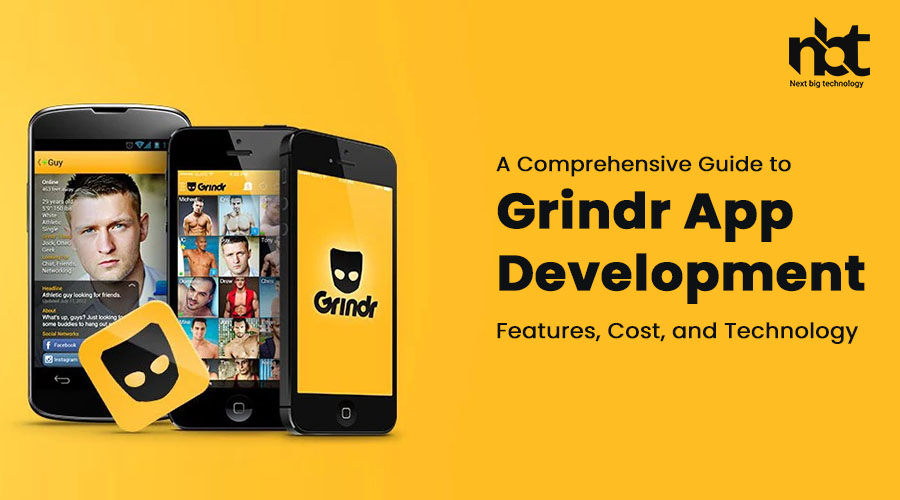Introduction:
Grindr is a popular dating and social networking app designed for gay, bisexual, transgender, and queer individuals. If you’re considering developing an app similar to Grindr, this comprehensive guide will provide you with valuable insights into the core features, the development process, and the estimated costs. From understanding the essential features of the Grindr app to exploring the technology stack and estimating the associated expenses, let’s delve into the world of LGBTQ+ dating app development.
I. Understanding the Grindr App:
- Overview of Grindr:
- Grindr is a location-based dating app that connects LGBTQ+ individuals and facilitates meaningful connections, friendships, and romantic relationships.
- Key Features of the Grindr App:
- User Profiles: Users create profiles with their photos, basic information, and optional bio to showcase themselves on the platform.
- Geo-Location: Grindr utilizes geolocation services to display nearby users based on their physical proximity.
- Chat and Messaging: Users can initiate conversations, exchange messages, and share photos within the app’s secure chat interface.
- Filters and Preferences: Grindr offers filters and preferences based on age, ethnicity, relationship status, and other criteria to help users find suitable matches.
- Tribes: Users can join or create “Tribes,” which are specific community groups based on shared interests, identities, or preferences.
- Explore and Discover: Grindr allows users to explore profiles and discover new connections beyond their immediate vicinity.
- Favorite Profiles: Users can mark profiles as favorites to easily access them later and show interest.
- Blocking and Reporting: Grindr implements features for users to block and report inappropriate behavior or profiles that violate community guidelines.
- Profile Customization: Users can personalize their profiles with additional details, such as hobbies, interests, and relationship preferences.
- Grindr Xtra: Grindr offers a premium subscription called Grindr Xtra, which unlocks additional features such as ad-free usage, unlimited profiles, and advanced filters.
II. Planning the Grindr-Like App Development:
- Define Your App’s Objectives:
- Determine the primary goals and target audience for your LGBTQ+ dating app. Identify the unique features or differentiating factors that will set your app apart from Grindr.
- Market Research and Analysis:
- Conduct market research to understand the needs, preferences, and challenges faced by LGBTQ+ individuals in the dating app space. Identify opportunities to create a more inclusive and empowering platform.
- Technology Stack:
- Choose the appropriate technology stack for your app, including front-end and back-end development frameworks, programming languages, and database systems. Consider scalability and real-time functionality requirements.
- User Experience (UX) Design:
- Create wireframes and design mockups to define the user flow, information architecture, and visual design of your app. Focus on a user-friendly interface, intuitive navigation, and inclusive features.
- Front-End Development:
- Develop the front-end of your app using the chosen technology stack. Implement features such as user registration, profile creation, swiping functionality, chat interfaces, and profile customization.
- Back-End Development:
- Set up the server-side infrastructure and APIs required to handle user authentication, location-based matching algorithms, chat functionality, and database management.
- Geolocation Integration:
- Integrate geolocation services to enable location-based matching and display nearby LGBTQ+ users for improved connections.
- Real-Time Communication:
- Implement real-time chat functionality, enabling seamless and instant communication between matched users.
- Security and Privacy:
- Implement measures to protect user data and privacy, including secure user authentication, data encryption, and adherence to privacy regulations.
- Inclusive Features and Community Support:
- Create features and mechanisms that foster inclusivity and support the LGBTQ+ community. This may include offering gender and pronoun options, providing educational resources, and actively combating discrimination or harassment.
- Testing and Quality Assurance:
- Conduct thorough testing to ensure the app’s functionality, usability, and security. Test different scenarios, including matching, messaging, profile management, and community safety measures.
- Deployment and Launch:
- Deploy your app to the respective app stores (App Store and Google Play Store) or make it available for web-based access. Develop a marketing strategy to promote your app and attract users within the LGBTQ+ community.
III. Estimating the Development Cost:
- Development Team:
- The cost will depend on the size and expertise of your development team, including project managers, designers, front-end and back-end developers, QA testers, and UX/UI specialists.
- Technology and Infrastructure:
- Consider the costs associated with the technology stack, hosting, server infrastructure, and third-party service integrations (e.g., geolocation services, push notifications).
- Features and Complexity:
- The number and complexity of features you plan to implement will impact the development cost. Advanced features like geolocation, real-time chat, community support mechanisms, and profile customization may require additional resources.
- Security and Compliance:
- Implementing robust security measures and ensuring compliance with data protection regulations may involve additional costs for audits, certifications, and security consultants.
- Maintenance and Support:
- Plan for ongoing maintenance and support costs, including bug fixes, updates, server maintenance, and customer support.
IV. Conclusion:
Developing an LGBTQ+ dating app like Grindr requires careful planning, user-centric design, and attention to security and inclusivity. By following the steps outlined in this guide and leveraging the appropriate technology stack, you can create a safe and inclusive platform for LGBTQ+ individuals to connect, build relationships, and find community. Remember to prioritize user safety, authentic connections, inclusive features, and an intuitive user interface. Embrace the opportunity to create an app like Grindr and provide users within the LGBTQ+ community with a platform that understands and caters to their unique needs and experiences.










